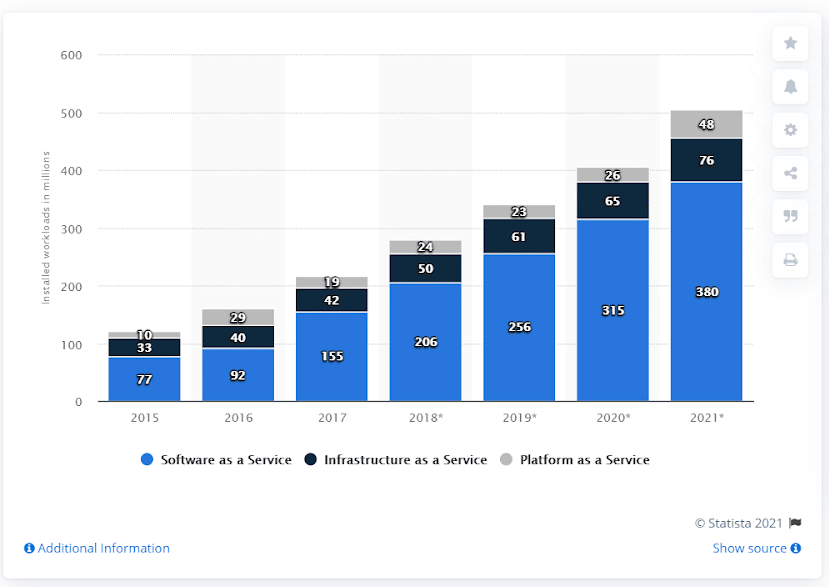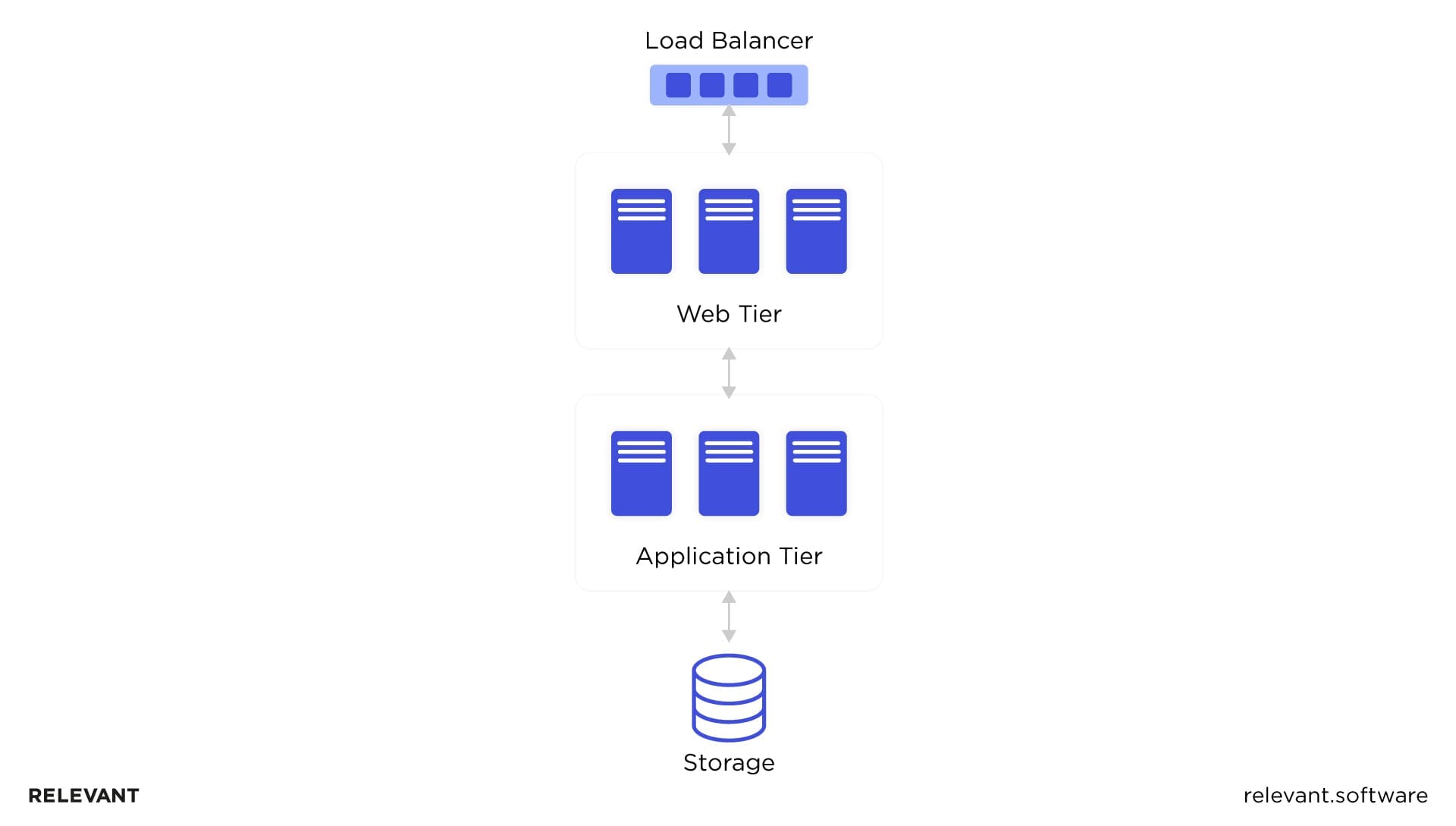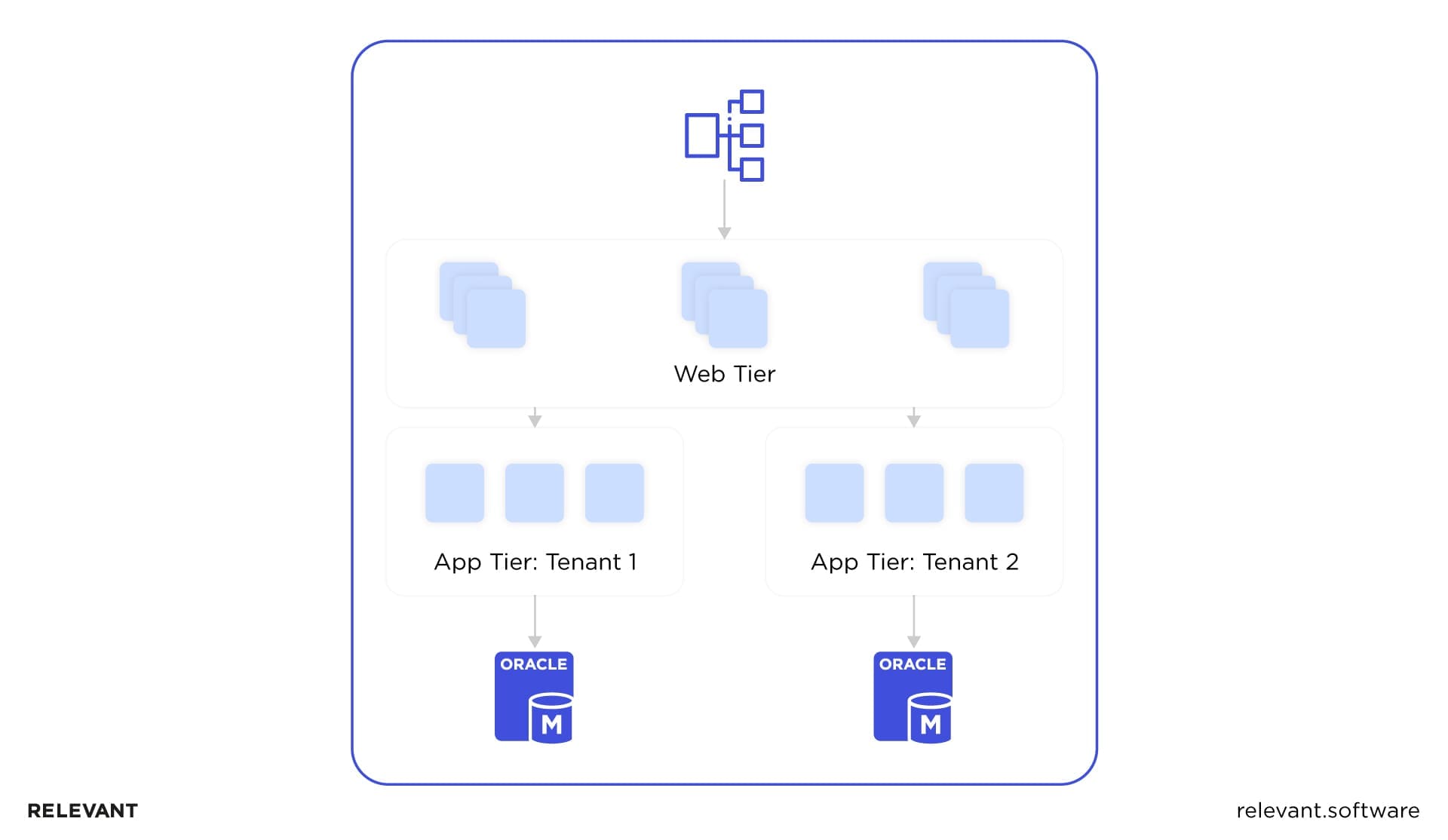Migrating to a SaaS Business Model: Why and How?
Updated: January 18, 2022
As SaaS adoption continues to rise, you may be considering joining the trend by rebuilding your on-premise solutions into SaaS offerings. But given that migration is an arduous task for any business, is the result worth the cost?
To help you decide, we’ve put together migrating to a SaaS business model guide that will walk you through the following:

We provide companies with senior tech talent and product development expertise to build world-class software. Let's talk about how we can help you.
Contact us- The reasons why businesses choose cloud
- How SaaS, IaaS, and PaaS are different
- Why SaaS is a better business model for an IT service provider than IaaS and PaaS
- How to successfully approach SaaS migration from both a technical and business perspective. Read also: How to Develop a SaaS Application
Let’s go!
Table of Contents
Why do businesses decide on moving from on-premise to cloud?
According to Flexera’s 2020 State of the Cloud Report, 20% of enterprises spend over $12 million annually on cloud computing, and 74% are reported to spend over $1.2 million per year. These findings show a rapid increase in cloud adoption since 2019, when only 13% of enterprises spent over $12 million, and 50% spent over $1.2 million.
Why are so many businesses moving from on-premise to cloud? The reason, of course, lies in its advantages.
The advantages of cloud computing
- Resource savings. By migrating your processes to the cloud, you get scalable computer power maintained by a third-party provider instead of having to invest in and maintain your own resources.
- Security. Cloud service providers can afford to make huge investments in resources and technology which may be beyond your budget, meaning your users are less vulnerable to cyber attacks.
- Connectivity and accessibility. As they’re no longer dependent on their on-site hardware, users can access a cloud solution at any time and from anywhere over the internet.
- Easier and faster deployment. With cloud hosting, you don’t have to spend months planning, building, and implementing your internal IT infrastructure. The process will take no more than a couple of hours or a few days.
- Freedom to focus on other business tasks. With cloud computing, you don’t have to think about server space, power requirements, updates, and so on. You can focus on your core tasks while your cloud provider takes care of everything else.
These benefits explain the increasing popularity of cloud computing, but obviously, there are downsides too. Let’s explore them now.
The disadvantages of cloud computing
- Security. No: you haven’t read us wrong. Security has its flip-side too since while a cloud provider has more resources to protect your data, any cloud solution operates online. This means that there’s always a risk that your data can be accessed by other people, so you need to choose a reliable cloud provider.
- Reliance on the internet. You can’t access a cloud-based solution without an internet connection, and what’s more, it won’t work well if the connection is slow.
- Reliance on a cloud provider. If any technical issues arise with hosting, you won’t be able to fix them on your own. You’ll have to contact customer support, which may not be available 24/7, and wait until they fix your problem.
As you can see, just like any tech solution, cloud computing has its downsides. Fortunately, choosing a reliable cloud service provider will help eliminate—or at least mitigate—their impact.
IaaS, PaaS, and SaaS—three main cloud computing service models
There are three main types of cloud computing service:
- Infrastructure-as-a-Service (IaaS)
- Platform-as-a-Service (PaaS)
- Software-as-a-Service (SaaS)
Let’s look at each one in a bit more detail.

Infrastructure-as-a-Service (IaaS)
IaaS businesses offer storage, networking, and virtualization services over the internet with a pay-as-you-go model. With IaaS, you lease the storage and server space necessary for building your product instead of having to host and manage servers on your premises. IaaS services provide a virtual foundation for software development.
Examples of IaaS: Amazon Web Services, Microsoft Azure, Magento 1 Enterprise Edition
Platform-as-a-Service (PaaS)
In addition to providing storage, networking, and virtualization, PaaS providers also offer software tools for building applications over the internet. This allows developers to focus on creating, deploying, and testing an app without writing everything from scratch.
Examples of PaaS: Heroku, Google App Engine
Software-as-a-Service (SaaS)
SaaS is a ready-made software product hosted online and delivered over the internet on a subscription basis. With SaaS, you can enjoy all the advantages of cloud computing without the need to build anything from scratch.
Examples of SaaS: JIRA, Dropbox, Slack
SaaS as the way to deliver your services
While IaaS and PaaS are focused purely on developers and software product owners, a SaaS product has a much broader customer base. It’s no wonder, then, that it’s the most popular cloud service delivery model: Statista reports that while the number of SaaS workloads is expected to reach 380 million this year, the number of IaaS and PaaS workloads combined won’t reach even half of this.

SaaS is not just a way to meet your IT needs: it’s also the way to deliver IT services. And it’s hard not to notice the advantages of SaaS as a business model within a B2B context:
- Predictable revenue. SaaS businesses operate on a subscription basis, which makes it easier to predict your monthly or even annual service revenue.
- A shorter sales cycle. The traditional process of establishing a relationship with a new client and planning deployment can take weeks or even months. With SaaS, a customer just selects a suitable pricing plan and starts using your services straight away.
- No need for customization. SaaS products do away with the need for customizing for the client. They simply choose the necessary features from several standard options. Thus, instead of spending time on tailoring and adjusting, you can focus on improving your product’s overall service.
- A better customer experience. With SaaS, your customers don’t have to install and update your product on their own. You take care of it, which means a better user experience and, as a result, higher sales potential.
Given all of this, no matter what kind of IT services you offer, the chances are high that migrating applications to SaaS will pay its way for your business.
Moving to the SaaS business model: technical considerations
So you’ve decided to switch from on-premise to SaaS architecture. What’s next?
Just as with any business move, while the benefits may be indisputable, it’s critical to act with care and forethought when it comes to the technical side of things. The following considerations will help you move to SaaS smoothly, with minimal risks.
Plan it out thoroughly
Successful SaaS migration is an incremental process. During the planning stage, you need to focus on two tasks. The first is splitting your existing solution into parts, which you then migrate to a new model one by one. The second is introducing the tools and frameworks required for migration.
Outline your architecture
An important step at the planning stage is to break down your existing product’s architecture. Most apps have a pattern similar to this:

In this model, the web tier manages and delivers your application assets, the load balancer distributes traffic to web servers, and the application tier accesses your app’s database.
Choose the right migration model
When it comes to SaaS migration models, there are several solutions. Your business case will dictate the best approach for you. The most common options are silo migration (single-tenant), layered migration, and data migration.
- In the silo migration model, or single-tenant model, each SaaS user (tenant) has a dedicated server or infrastructure. This model requires no refactoring (basically, the design remains the same) and offers numerous benefits to end-users, such as data security and customization abilities.

- A layered migration model implies that you migrate your solution on a layer-by-layer basis. With this approach, you incrementally move layers to a shared multi-tenant model, while other layers retain their single-tenant design. For example:

With layered migration, you can choose any layer to start your migration from and then move the rest as you see fit.
- In a data migration model, data storage is migrated to a multi-tenant scheme while the remaining layers use a single-tenant architecture.
Though the three models are quite different, they aren’t mutually exclusive.
Granularity drives agility
Migrating your application to the cloud makes it not only scalable and globally available but also improved from the architecture point of view. To achieve the full potential of the cloud, your software services have to be the right size and shape, just like lego bricks. And the process of service decomposition to achieve optimal granularity is the main factor that will drive your migration. The migration strategy will be influenced by the way you adapt and transform your architecture into microservices, which are easily scalable, more resilient, and multi-tenant aware.
Your software is probably already composed of some sort of services, and even then you’ll discover that some of them could be reshaped and granulated into more versatile and isolated ones.
Sure, considering all the pressures and challenges of your business and domain, as well as the technology stack of your software, the exact migration roadmap will be charted in a unique way. The main goal here is to maintain a balance between business needs and the technological advancement of your software.
Data migration considerations
Tenant data representation, optimization, and further migration are crucial when you transition your solution to a new model. There are a wide variety of tenant data storage solutions, each with its own strengths and weaknesses. Your choice of solution will influence how your migration happens.
Migrating to SaaS: business considerations
Despite all the technical complexities of moving software to a cloud-based SaaS application model, it’s still just as much a business decision: you don’t just rebuild your product; you change the way you deliver it to your customer.
Let’s look at the main business considerations you should keep in mind to make your SaaS migration successful.
Consider customer value
Each business has its own strategy for establishing the best price for its products or services. Your pricing strategy will obviously be based on things such as product value, competition, and the target audience. However, customer value (the value your product brings to users) should always be a key consideration since customers purchase based on their own value perceptions.
Foster customer loyalty
Attracting new customers is the cornerstone of business growth—which is why most companies end up neglecting to foster customer loyalty. The truth is that a good retention rate allows SaaS service providers to generate predictable revenues for each billing period while acquiring new customers organically.
It’s also true that an existing prospect is more likely to purchase additional products from you than a new one, which gives you a chance to upsell products and services that cater to the needs of your customers.
The bottom line is that with SaaS, retaining existing customers becomes crucial for increasing your income.
Use metrics and analytics
There are an extensive variety of metrics for measuring SaaS business success. The most essential ones are:
- Monthly recurring revenue: the income your business can count on every month.
- Customer churn: the percentage of customers who cancel or fail to renew their subscriptions.
- Annual recurring revenue: basically, the annual income of your SaaS project, as predicted based on existing subscriptions.
Though metrics alone won’t fix problems if they arise, they’re a powerful tool for making informed decisions.
Offer easy integration
A typical company uses a bunch of SaaS solutions integrated into a hybrid system. To make sure your customers can get the maximum value from your SaaS product, you need to ensure that it integrates easily with other solutions, which implies building your own API.
Trust Relevant for SaaS migration
While the advantages of SaaS solutions for end users are undeniable, the SaaS business model offers game-changing opportunities for IT service providers, too. Still, moving an app to the cloud can feel like a daunting task from both a technical and business point of view.
In fact, shifting to SaaS business model is not so tough if you outsource the task to a reliable cloud migration service provider. At Relevant, we know the ins and outs of infrastructure migration to the cloud. The methodology DevOps for SaaS can help make the transition fast, flexible, and secure. Just drop us a line, and we’ll help to handle your software product migration to the cloud-based business model in a way that works for you.
Our core services:
Do you want a price estimate for your project?
Do you know that we helped 200+ companies build web/mobile apps and scale dev teams?
Let's talk about your engineering needs.
Write to us











